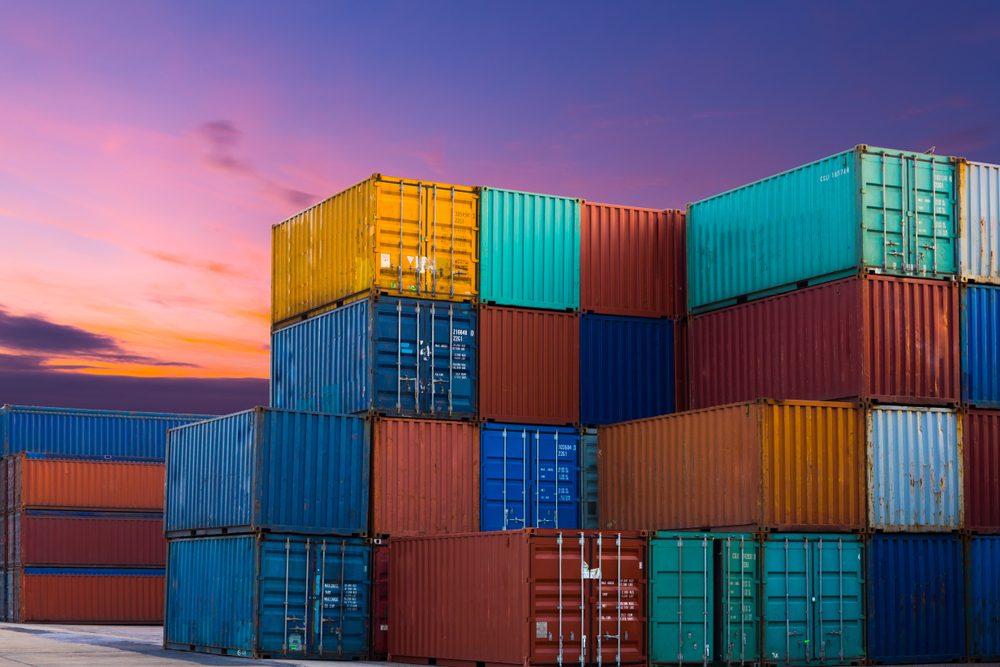We investigate how a US forced-labour law targeting China is affecting US supply chains.
In June 2022, the United States began to implement the Uyghur Forced Labor Prevention Act (UFLPA), a law which prohibits the importation of goods produced by forced labour in the Xinjiang region of China. The UFLPA, which was signed into US law in December 2021, is part of an international response prompted by allegations of human-rights abuses committed against the Uyghur people and other minority groups by the Chinese government.
Under the UFLPA, the US government operates under the presumption that all goods imported from the Xinjiang region of China were made with forced labour. To enforce the law, US Customs and Border Protection (CBP) detains all imports from this region, barring these goods from entering the US market. For these goods to be released, companies must prove with conclusive evidence that their imports have had no ties to forced labour at any stage in the production cycle.
US importers were already likely to be familiar with section 307 of the Tariff Act of 1930, a statute enacted in 2016 that more broadly prohibits the importation of goods produced entirely, or in part, by forced labour from anywhere in the world. However, the UFLPA’s particular focus on China, the shift in the burden of proof from the US government to importers, and the more granular level of scrutiny by CBP has caught many companies by surprise. This is shown, for example, by the heap of detained solar-panel materials, worth over a billion US dollars, sitting in warehouses at California ports.
To better understand what compliance and enforcement of the UFLPA looks like in practice, we spoke to David Stepp, a veteran trade attorney at international law firm Crowell & Moring. Stepp is currently working with several multinationals that are attempting to comply with the stringent standards required by the US forced-labour act.
According to Stepp, compliance with the UFLPA involves a two-step process. The first step requires companies to conduct a deep dive into their supply chains, from first-tier suppliers all the way down to the origin of raw materials, to prove that their imports are in no way connected to the Xinjiang region.
For example, in the apparel industry, they say you have to go back to the cotton bales. If you can trace from the finished garment back to the cotton bales, with lot numbers and transportation documents, through the spinning and the weaving and the dying and the cutting and the assembly process—you have to go through each stage of that production—then you’re going to satisfy Customs. But that’s, as you can imagine, that’s quite onerous.
David R. Stepp, Partner at Crowell & Moring
If the first step is unsuccessful and a company is unable to prove that the supply chain has no links to Xinjiang, it must then proceed to the second step. At this stage, the CBP suspects that the company’s imports have some link to the Xinjiang region. The goods are therefore impounded by CBP, and the company is given 30 days to file a submission with clear and convincing evidence demonstrating that the goods had no connection with Xinjiang, Uyghur forced labour and/or certain named entities.
In the nine months since the UFLPA came into effect, there have been no successful rebuttals of detained goods. This leaves only two other options for the imports piling up at the borders: destroy the goods or export them, either back to the country of origin or to another market (with the exception of Canada and Mexico, owing to the US-Mexico-Canada Agreement).
Stepp explains that the level of scrutiny is intense, citing cases where goods manufactured outside China failed to pass muster, as some of their inputs were from Chinese third-party suppliers. To further complicate matters, the Chinese government has pushed back by making it illegal for Chinese companies to comply with laws such as the UFLPA.
So a US company, an importer, cannot go to their Chinese supplier and utter the word Uyghur Forced Labour Prevention Act, or any other US export control law or sanctions law without violating that Chinese law. And that gives the Chinese manufacturer a private right of action against that US company. It makes it incredibly difficult for communicating with the suppliers and doing this due diligence.
David R. Stepp
As a result, companies are in a catch-22, with many looking to move operations elsewhere. For final production, some companies are considering Vietnam or Mexico, where they could benefit from greater supply-chain transparency. Undoubtedly however, any Chinese inputs would still require onerous due diligence. According to Stepp, while detentions have risen since enforcement of the law began in 2022—and so too has the demand for solutions providers to destroy goods—he expects more robust rebuttals from importers as they continue to navigate this complicated landscape.
Subscribe to “Double Take” on your podcast app of choice or view the Forced labour, supply strain episode page to listen in your browser.
This is a financial promotion. These opinions should not be construed as investment or other advice and are subject to change. This material is for information purposes only. This material is for professional investors only. Any reference to a specific security, country or sector should not be construed as a recommendation to buy or sell investments in those securities, countries or sectors. Please note that holdings and positioning are subject to change without notice. This article was written by members of the NIMNA investment team. ‘Newton’ and/or ‘Newton Investment Management’ is a corporate brand which refers to the following group of affiliated companies: Newton Investment Management Limited (NIM) and Newton Investment Management North America LLC (NIMNA). NIMNA was established in 2021 and is comprised of the equity and multi-asset teams from an affiliate, Mellon Investments Corporation.






